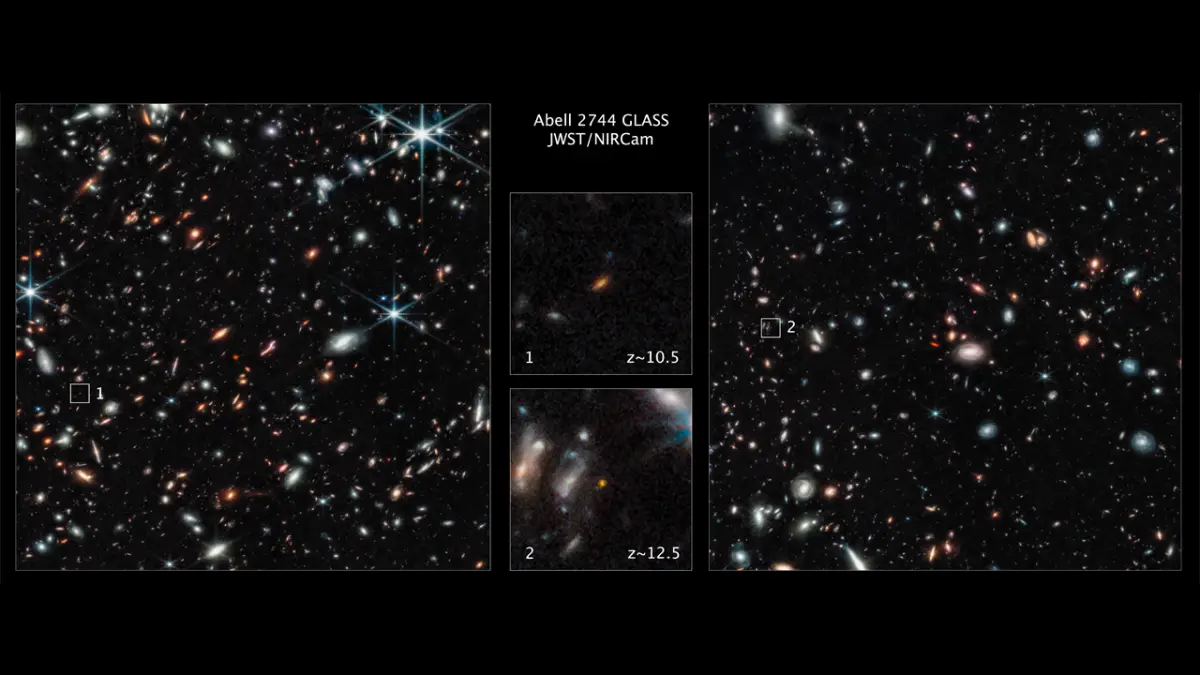pace telescopes provide us the ability to see back in time, as well as the ability to view far into the night sky. In truth, the JWST principal aim is to gaze back into the early universe. A new study of JWST deep-field photos shows what may be the observable universe’s oldest galaxy. It seems like nothing more than a speck of red paint on the wall. The discovery team, on the other hand, thinks it developed during the first 300 million years of the universe’s birth.
GLASS-z13 is the name given to an old galaxy with the mass of a billion suns. GLASS-z11 was also discovered by the same team that discovered GLASS-z13. When you see a Z in their names, you know that they have redshift factors of 13 and 11, respectively. Spectroscopic examination of the galaxy’s brightness reveals that it was produced during the re-ionization period of the Universe.
Both GLASS-z13 and GLASS z-11 has been estimated to be around 1600 and 2300 light years in diameter, respectively, by the team that discovered them. The Milky Way Galaxy, by contrast, spans a distance of around 10,000 light years.
Seeds of GLASS
We may infer the ages of stars and galaxies from their heavy element abundance as well as their redshift. The last element in the periodic table to experience energy release from stellar fusion is iron. A star’s fusion core can’t use elements heavier than iron as fuel. Instead, the fusion that produced these heavy metals must have occurred when the star collapsed into a supernova, under the crushing force of the star’s mass.
The spectral lines of young stars reveal the presence of metals and heavy elements. In contrast, since no supernovae had occurred before the fall of the earliest stars, they are deficient in metal. In the beginning, the strongest elements didn’t exist. As an alternative, the early supernovas provided the necessary ingredients for sophisticated life to flourish.
Astronomers search for Population I stars in old and distant galaxies like GLASS and its relatives. After the Big Bang, the first stars formed from gas and stardust. Some black holes are generated in the same way.) Instead of originating during the demise of a massive dying star, they formed from ambient stardust and hydrogen.) Population II stars were produced from the stellar remnants of Pop I stars after they went supernova.
Within a few hundred million years of the Big Bang, the earliest galaxies in the cosmos were produced by Pop I and Pop II stars. JWST will utilize these stars and galaxies to look back in time to when the Universe was just beginning to form. With its eerily predictive plot, we must give No Man’s Sky points for its use of the Sentinel. There is no doubt that the cosmos was seeded with glass at some point.
Source: ExtremeTech

